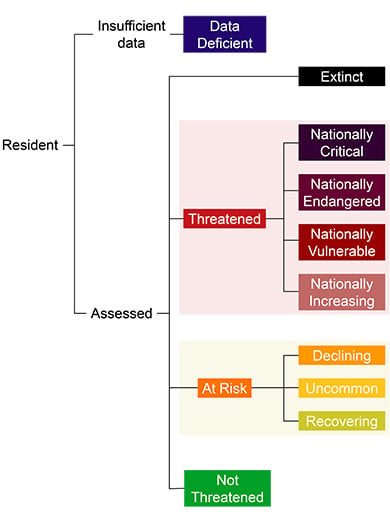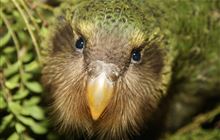Conservation status of plants and animals
Introduction
The conservation status of a species is a forecast based on observed trends and likely pressures.How species are assessed

Relationship of NZTCS categories
Image: DOC
Panels of experts from New Zealand’s scientific community determine a species' conservation status using the following assessments:
- What’s the current population size? This can be the number of breeding adults or the area of occupied habitat.
- How much is the population estimated to rise or fall over either the next three generations or 10 years (whichever is longer)?
- If the population is stable, has it declined in the past?
- Is the population state a result of human-induced effects?
Difference between endangered and threatened
The terms 'endangered' and 'threatened' are used interchangeably by different organisations to express similar concepts – species being in danger of becoming extinct.
In the New Zealand Threat Classification System these terms mean two different things.
- The term 'Threatened' is used as an umbrella category that groups conservation statuses with the greatest risk of extinction. For example: small population with greater rate of decline.
- The term 'Endangered' is used to name one specific conservation status – Nationally Endangered.
Threatened
Species assessed as 'Threatened' face the greatest risk of extinction.
- Nationally Critical: most severely threatened, facing an immediate high risk of extinction.
- Nationally Endangered: facing high risk of extinction in the short term.
- Nationally Vulnerable: facing high risk of extinction in the medium term.
- Nationally Increasing: small but increasing population still facing a risk of extinction in the medium term.
At Risk
Species assessed as 'At Risk' aren’t considered 'Threatened', but they could quickly become so if conservation management reduces, if a new threat arises, or declines continue unabated.
- Declining: population declining but still moderately common.
- Recovering: population increasing after previously declining.
- Uncommon: naturally or unnaturally small population and therefore susceptible to harmful influences. Uncommon is the conservation status that combined the 2008 conservation statuses Relict and Naturally Uncommon.




